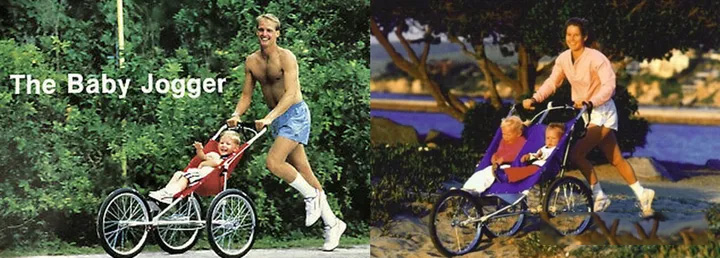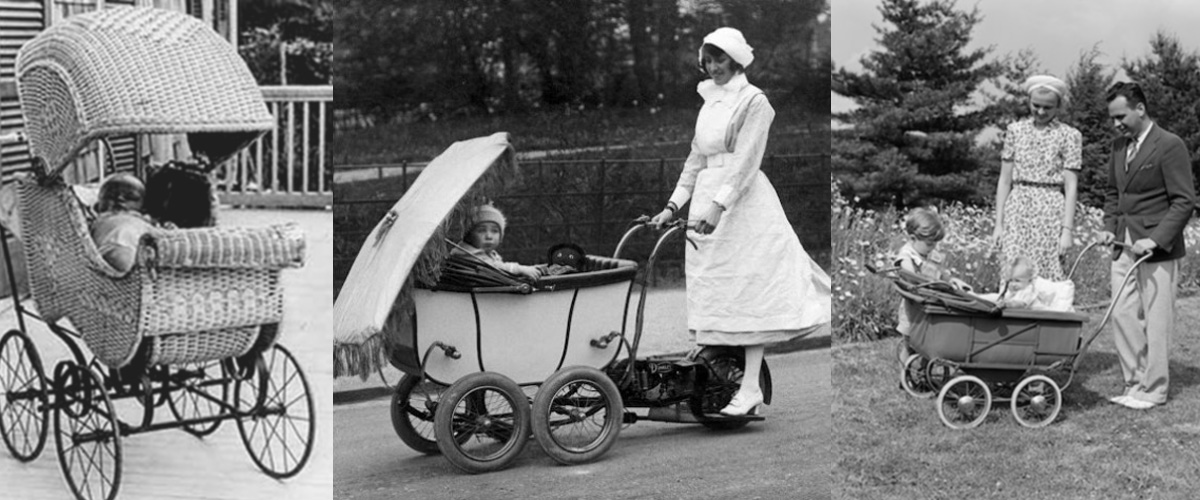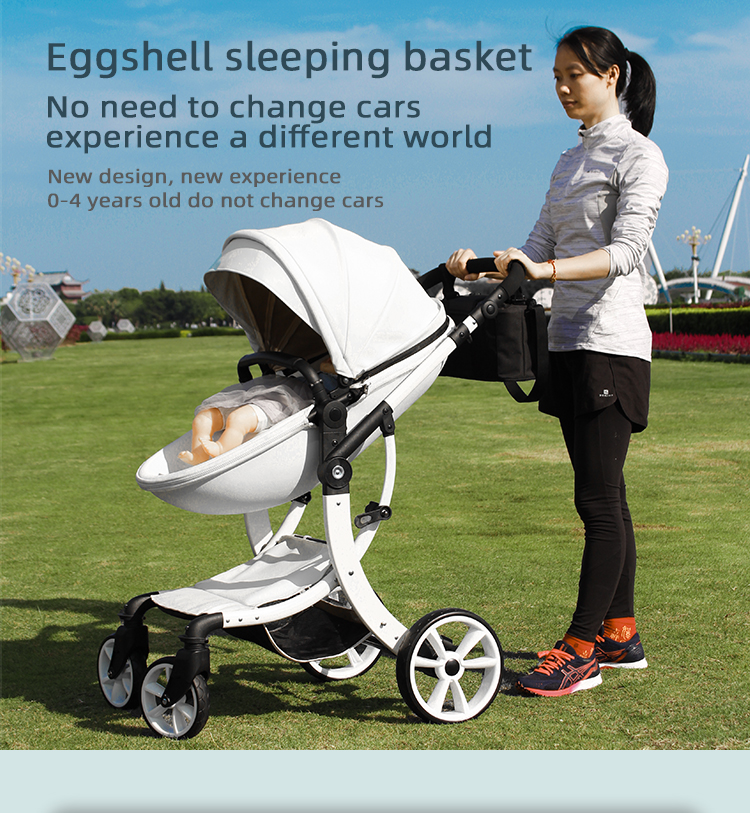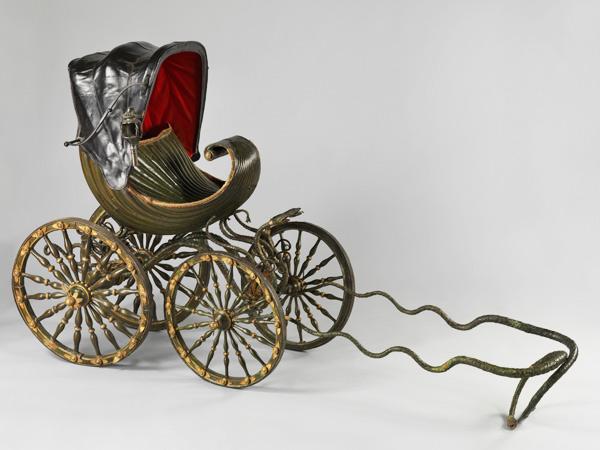
The first baby carriage in history
The pram was first invented by William Kent in 1733. As a designer of royal gardens, he designed a stroller for the Duke of Devonshire’s children to get around in.
His pram is ornate, shaped like a seashell with a curved slipper toe on the front, made of wicker. It has long, snakelike harnesses that are attached to animals (such as horse-drawn carriages or dog sleds). The snakelike design can be seen in several places on the pram, and the snake is part of the Devonshire Shield, so the pram adds quite a bit of royal flair. It is also known as the Chatsworth Serpentine Stroller, but only a handful have been built due to its high cost and laborious design.
In the photo below, note the crushed velvet seats, the red silk canopy, the intricate suspension, the two protruding snake heads and the snakelike seat belts. It is also worth noting that there is no guardian pushcart handle, as the original strollers were pulled by goats or other animals.
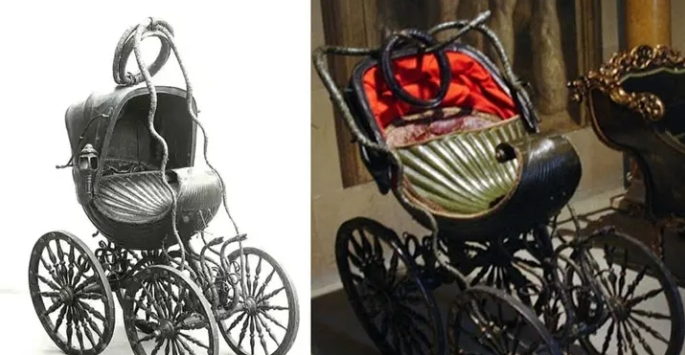
Being pulled by a goat was not unusual at the time. The child of President Harrison, the ninth president of the United States, was also pulled around the White House lawn by a goat.
While it is beautiful to look at, it is also uncomfortable for babies, who do not fit well into the seat.
After Kent’s initial contribution to the royal family, his pram was “innovated” into different types, some of which found their way to a wider market.
But in the 1700s and early 1800s, owning a stroller was a status symbol of wealth that was out of reach for most people due to its high cost. They are extremely rare, and most parents simply leave their babies at home.
First wheelbarrow
In 1848, Mr. Charles Burton from the United States designed the first pushchair. From then on, the baby can be wheeled out of the house by its own parent or guardian, rather than being pulled by an animal.
An artist saw the cart and immediately depicted a nurse pushing a baby while wearing a large “canopy” hat to protect the child from the elements (see picture below in the center). It was also advertised as an interesting idea. Perhaps Mr. Burton didn’t think it would be possible to put a top on a stroller.
The new stroller didn’t sell well in the United States, but it was a hit in Britain.

The first stroller patent
It was not until 1889 that Sir William Richardson filed the first patent for the design of a baby carriage. This does not mean that no other strollers were made between patent applications. There are others, of course, most of which have wicker baskets placed on top of metal frame structures with wheels.
But Mr. Richardson’s design expanded on that with many of the impressive features of the time: a spring-loaded suspension, a large umbrella canopy, a cradle-like basket that could be rotated 180 degrees to face either direction, wheels that spun independently (to help turn), and a design for a baby to lie flat or sit in a chair.
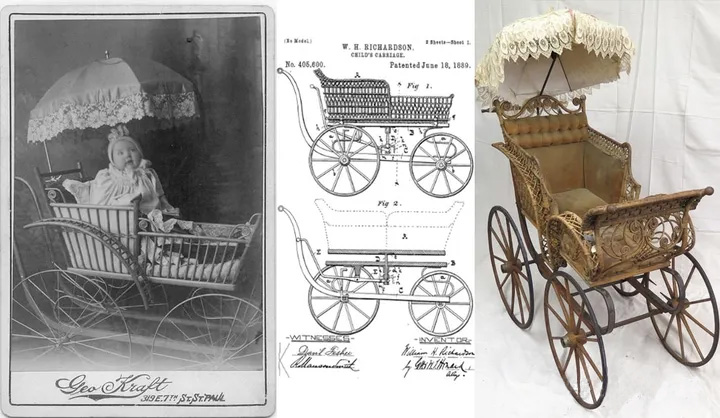
Strollers used to be basically baby wheelchairs, but you took a little wooden chair and put some wheels on it. The stroller is a big step up from previous strollers.
It set the stage for several developments in the stroller’s history, including a manufacturing boom and popularity in Britain and other parts of Europe, and gradually spreading to the United States. Since then, strollers have gradually become very common among wealthy citizens of major European cities such as London and Paris.
Some strollers from the 1890s
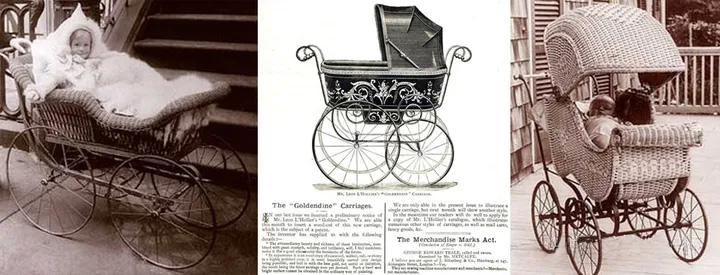
Many strollers in the 1890s were manufactured by Wakefield Rattan, Heywood Brothers, Gendron Wheel, and FA Whitney Carriage Co. And other companies.
Wakefield Rattan and Heywood Brothers merged in the late 19th century and developed a baby carriage called Heywood Wakefield in the early 1900s.
Another type from the 1890s is Leon L’Hollier’s Goldendine Carriage, shown in the center of the image above. The Goldendine carriage was decorated in real gold and was one of the strongest strollers of its time. As stated in their press release:
More vintage strollers from that era
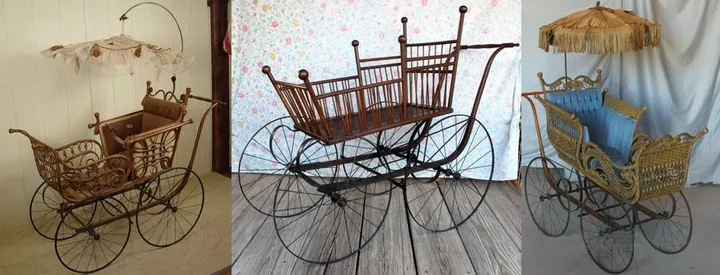
Look at these strollers now and you’ll see that they are both similar and very different from modern strollers. They have similar overall features — wheels, handlebars, awnings, upholstery, and versatility to sit and lie down.
But the biggest concern is the difference in safety standards. Can you imagine how many nip, choke and tear risks these old strollers have? ? A baby might run his finger through the wicker and cut it on the wheel; Or completely falling out of a stroller without a seat belt. The most common problem with these strollers is rolling over and tipping back and forth.
A baby carriage from the early 1900s
Plastic didn’t fully become mainstream until the mid-1900s, much less aluminum or other lightweight composites. The spokes of the stroller were made of lightweight wood, the frame of the stroller was made of steel, the bottom of the seat was made of wood, and the sides were made of wicker. This made the early strollers very heavy, with the earliest ones weighing over 22KG! Today, even twin strollers are half that weight.

At this point, strollers are still quite expensive, a good one around $25- $40, equivalent to around $700 today.
A baby carriage from the mid-1900s
The Great Depression and World War II severely affected manufacturing, and stroller innovation slowed slightly. People have more important things to worry about than pushing a snazzy new pram around town.
It wasn’t until the 1950s that the market for strollers began to improve. Most families can afford at least one stroller for their children. Costs are down, plastic use is up, and more safety measures are being implemented than ever before.

Strollers of this period were mainly made of plastic and other composite materials instead of wood and wicker. Retractable canopies are standard, lie-flat designs are the most popular, many have windproof sleeping basket covers, rubber tires are also standard, and chrome plating is the main visual feature.
With shiny, sleek lines, curved handlebars, fenders, brakes and other safety features, as well as a lower center of gravity and higher stability to prevent rollovers, strollers became more reassuring to parents during this period. They are still bought even today, including by Prince William and Kate Middleton, who have been pictured pushing the beautiful Silver Cross stroller around.
But in the 1960s, the market began to shift again. The classic strollers are too big and bulky to be practical, and parents want to be able to travel with them, even on planes, or just throw them in the trunk of their car. This began the light and compact stroller revolution, culminating in the first folding umbrella stroller!
Stroller – Lightweight and foldable

The first foldable stroller was invented by Owen McLaren, whose name is still popular in the world of strollers. It was called the Maclaren, and it really changed everything about strollers at the time. After Maclaren opened the market, other companies quickly joined in, and by the late 1900s the market was quickly saturated with folding carts.
A stroller from the late 1900s
The last three decades of the 20th century saw great advances in strollers, including advances in comfort, safety, versatility, and style.
In 1984, Phil Baechler invented the first running stroller, which he named “Baby Jogger.” His company, Racing Strollers Inc., sold only a few hundred in its first few years, but then became popular in the late ’80s and early’ 90s. He designed single and double stroller versions that sell for about $250- $300.
